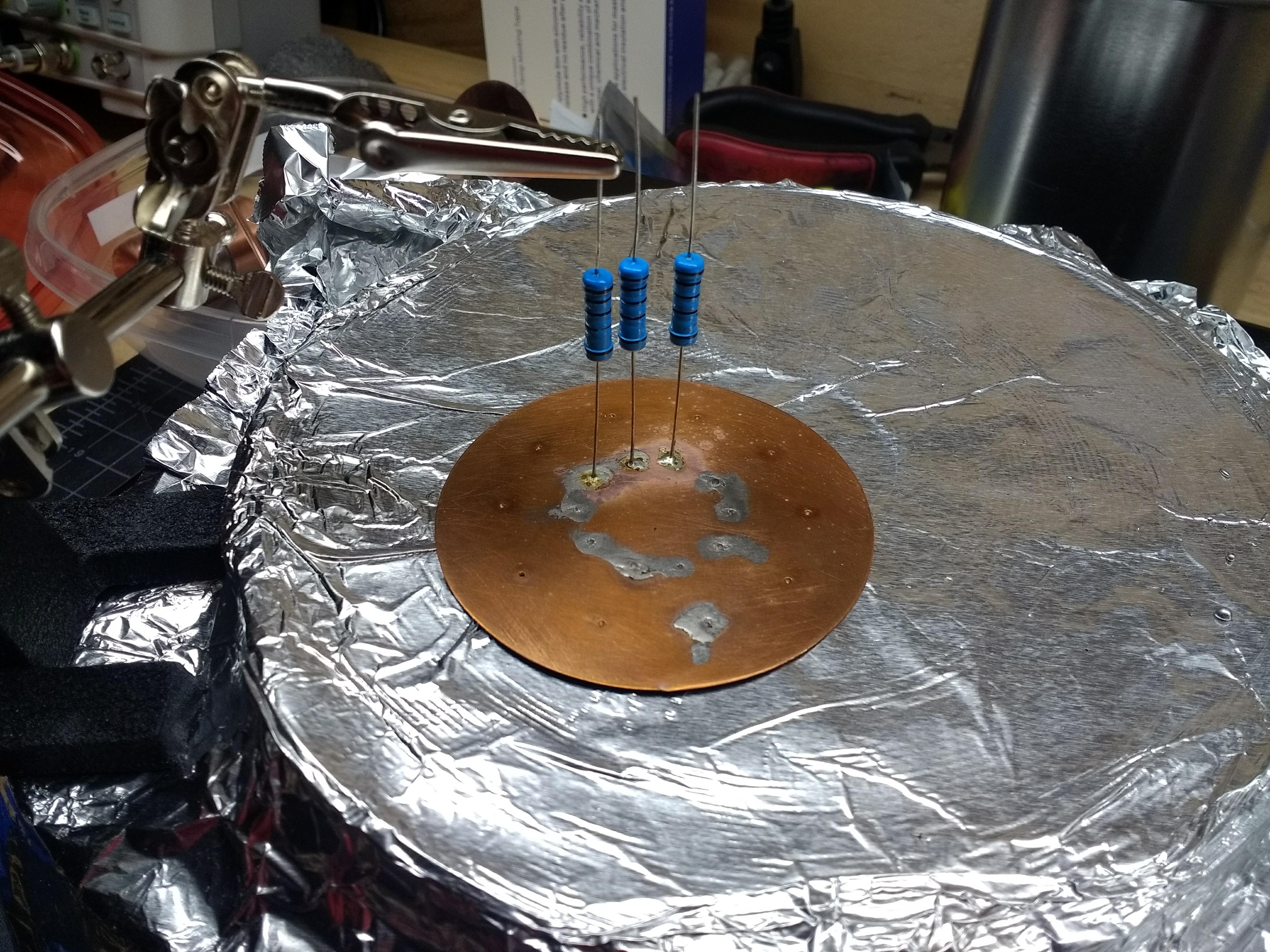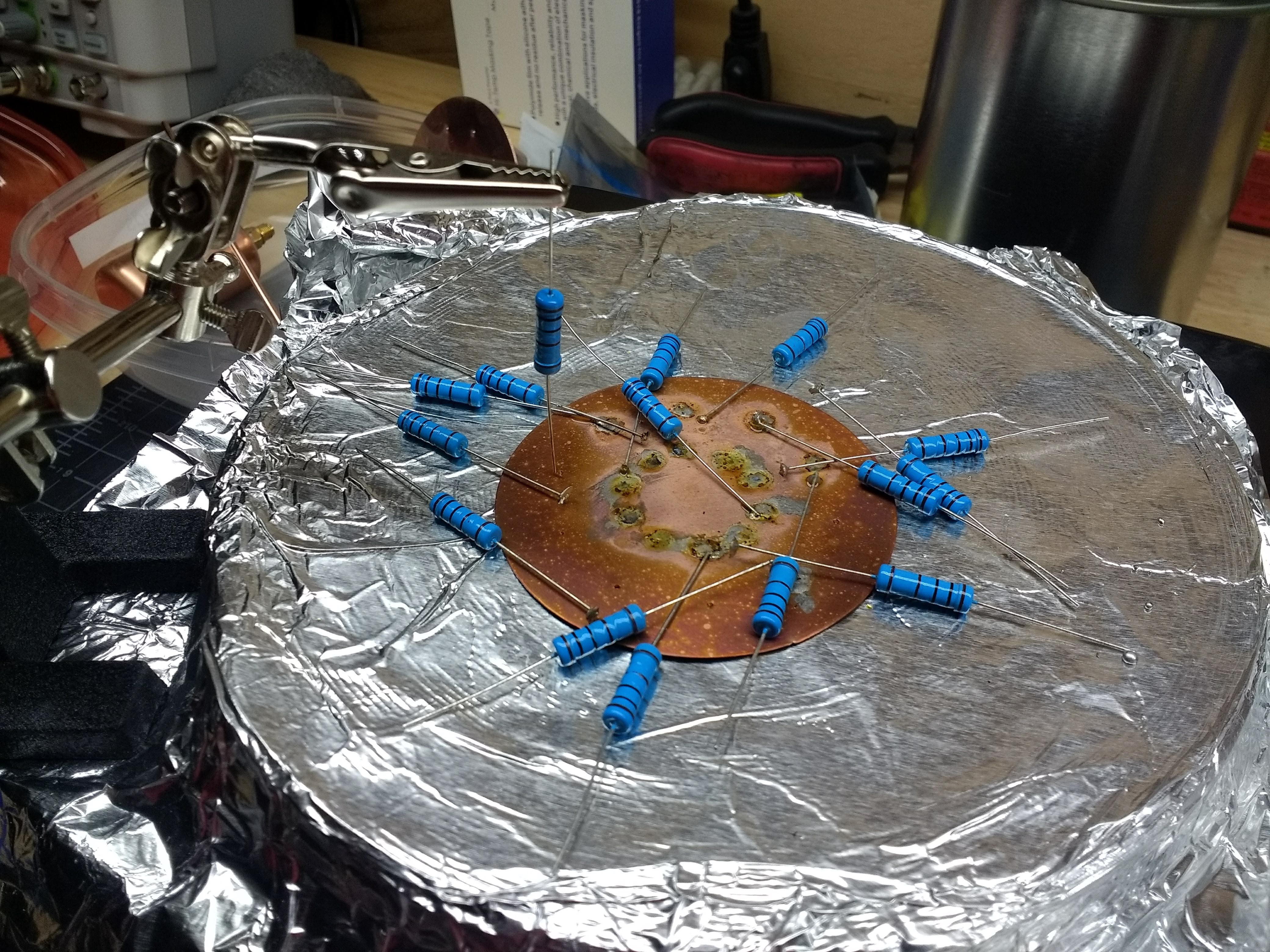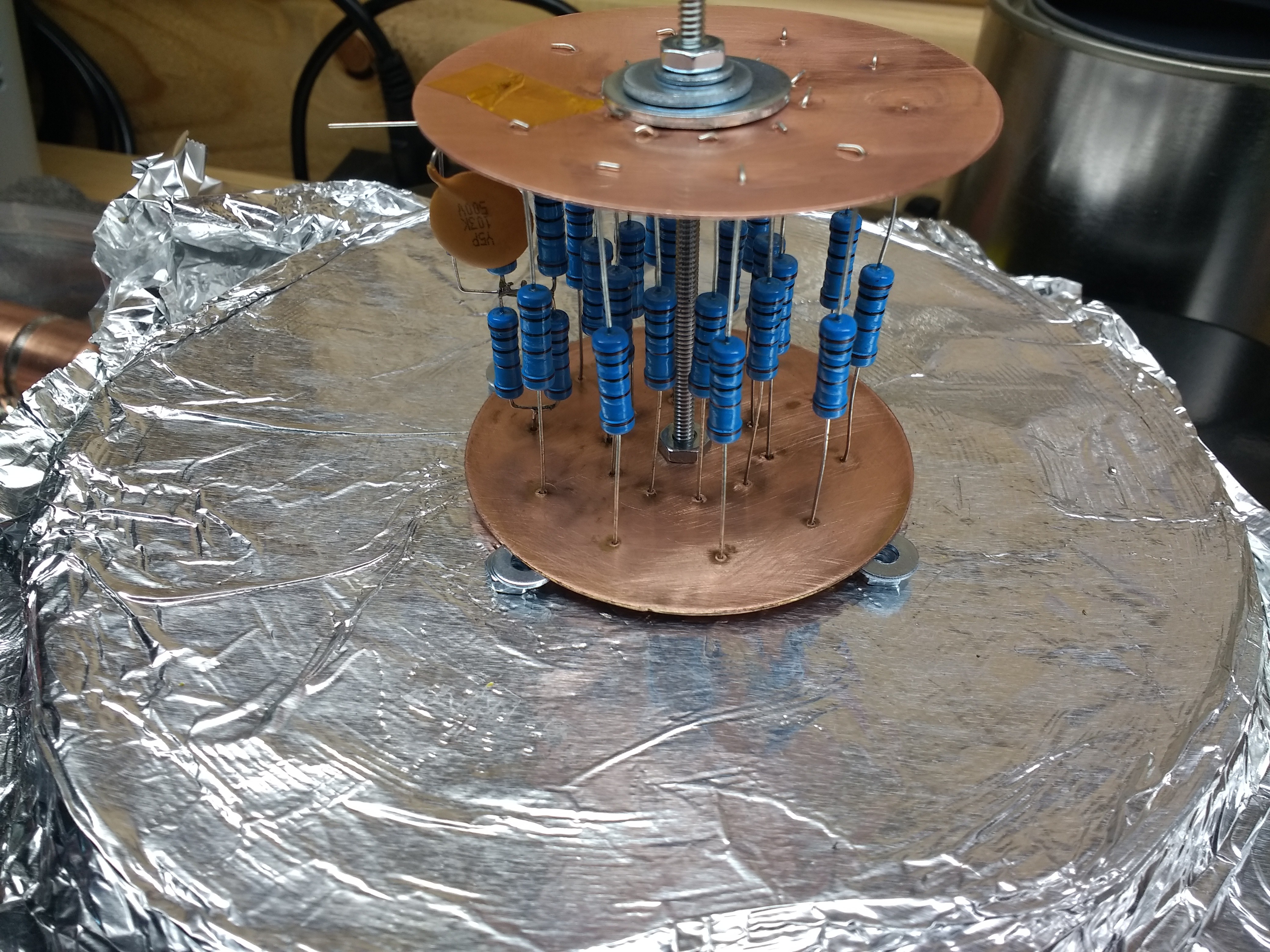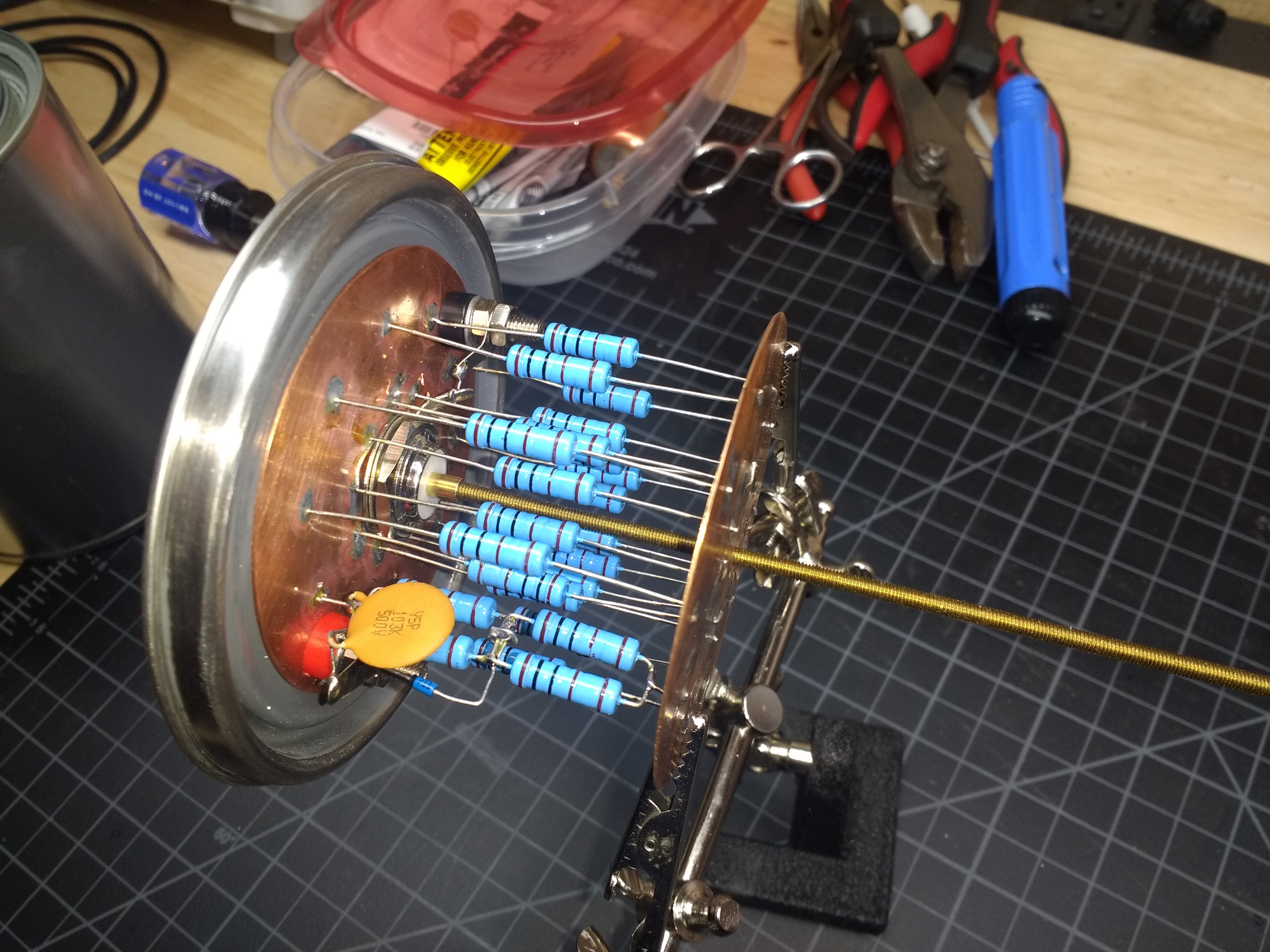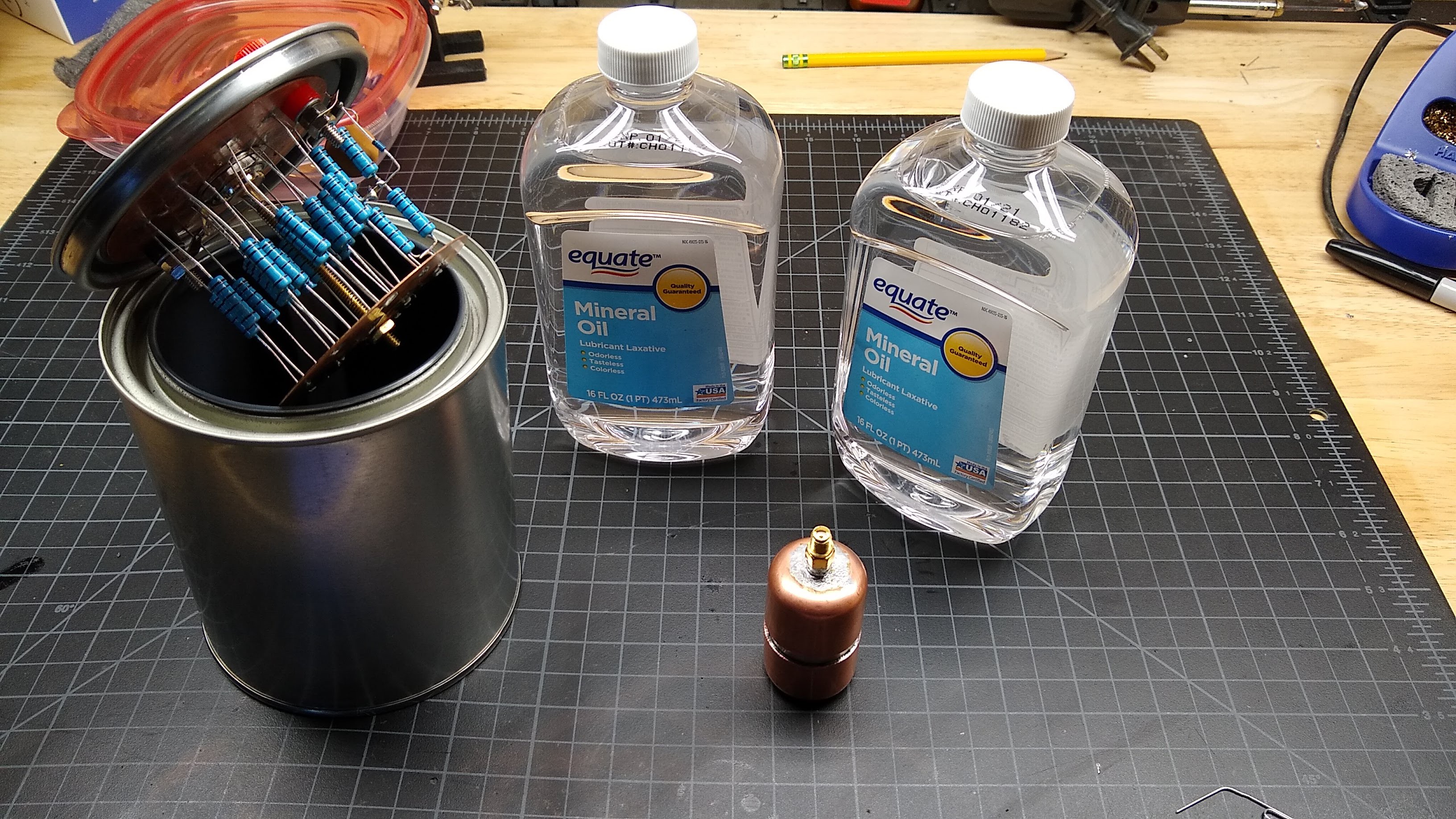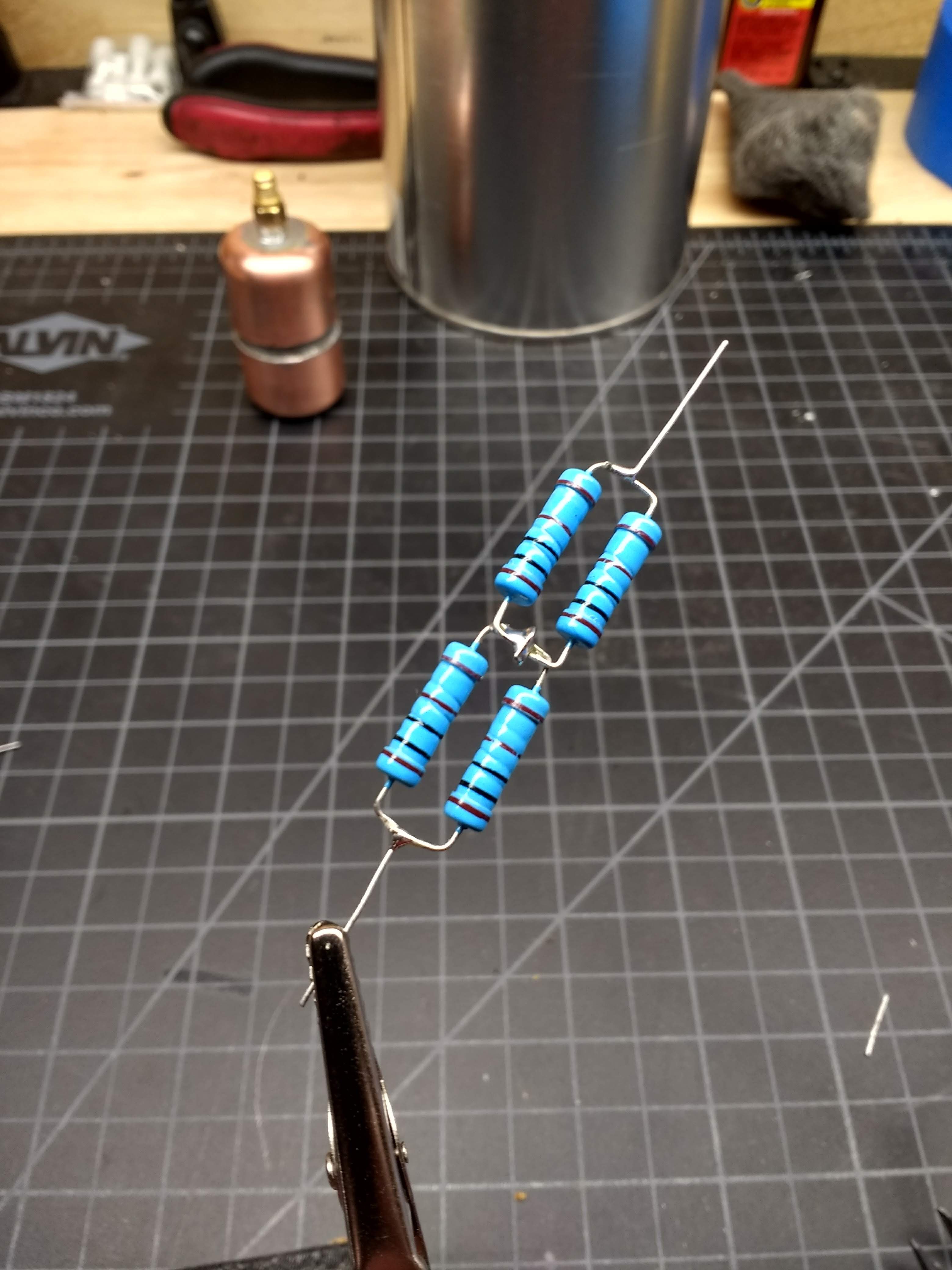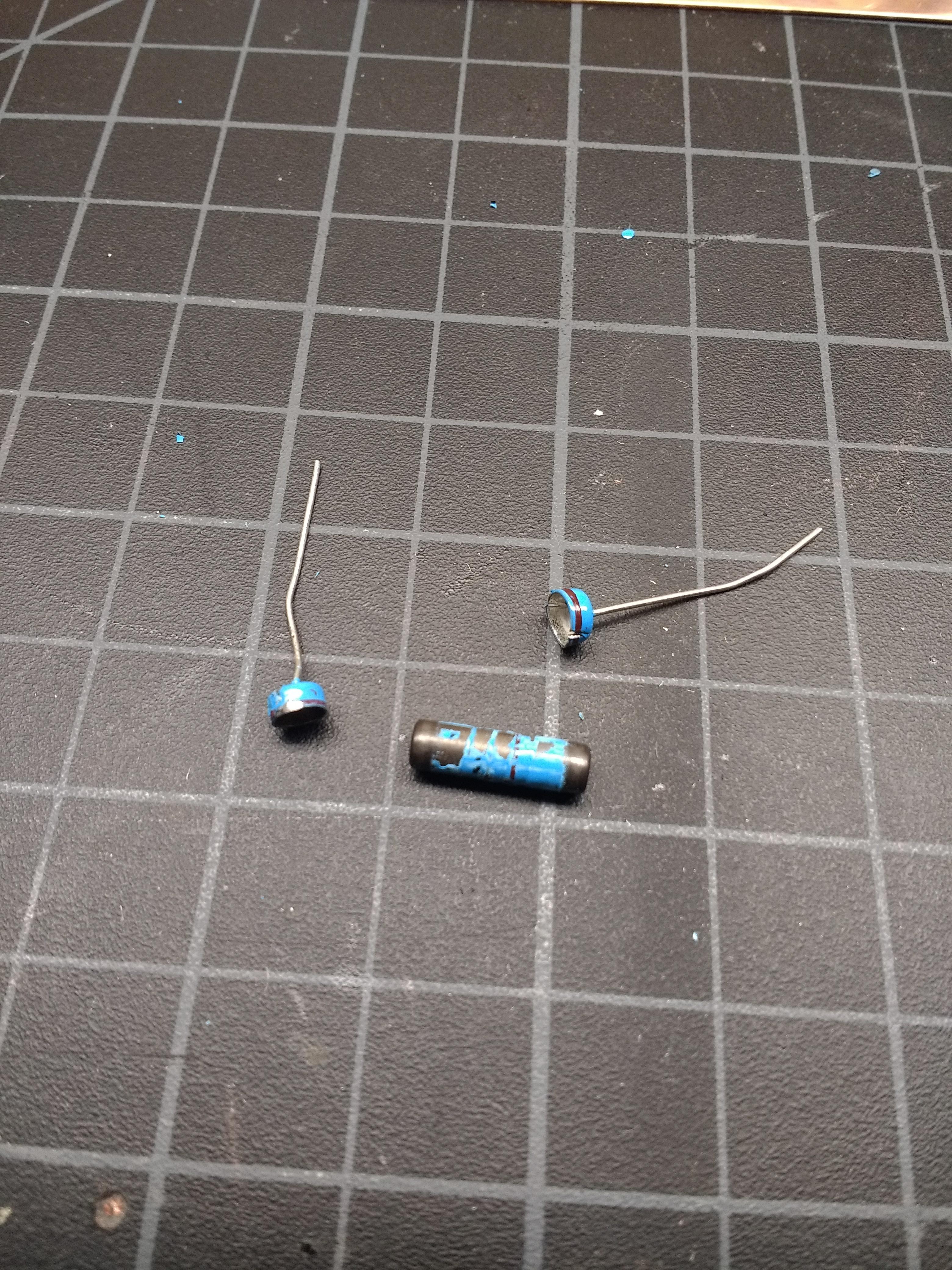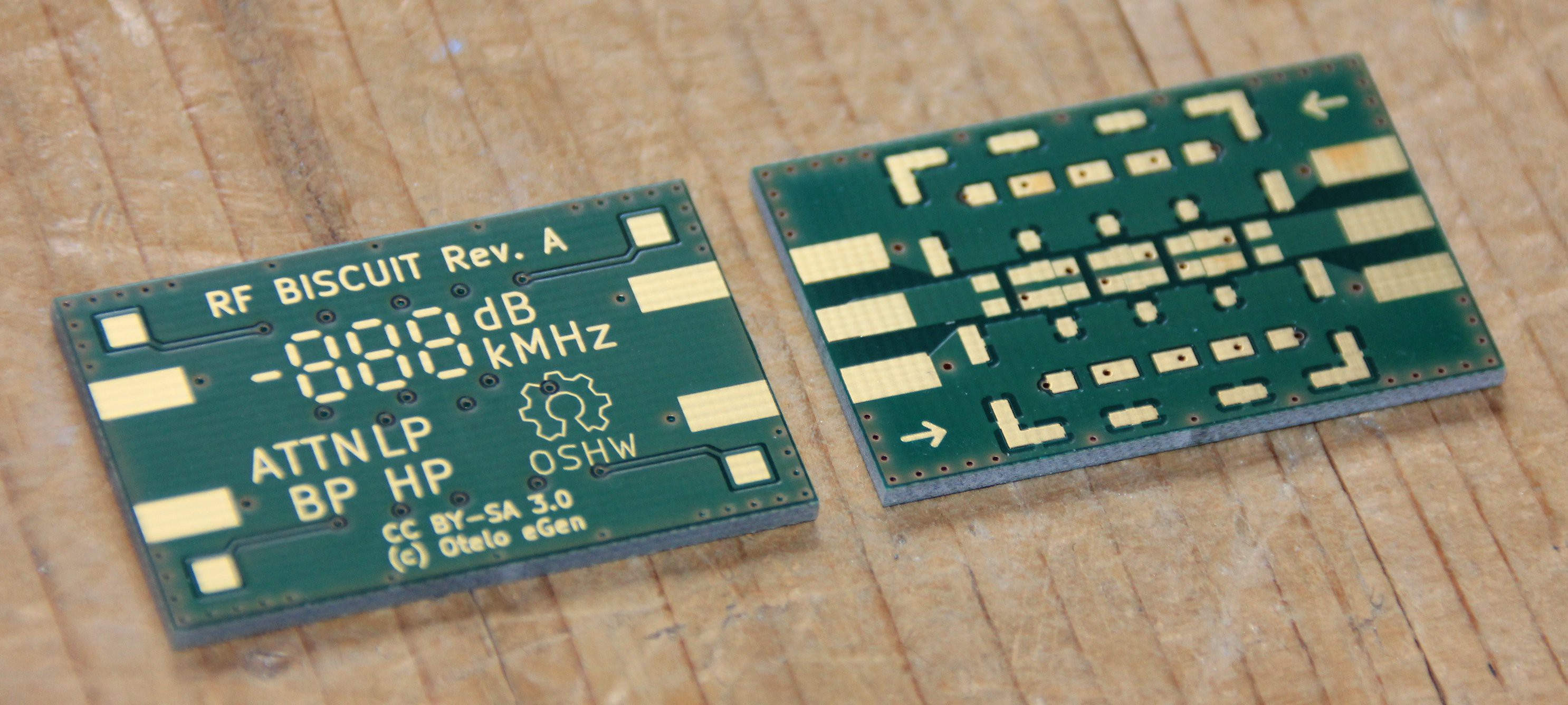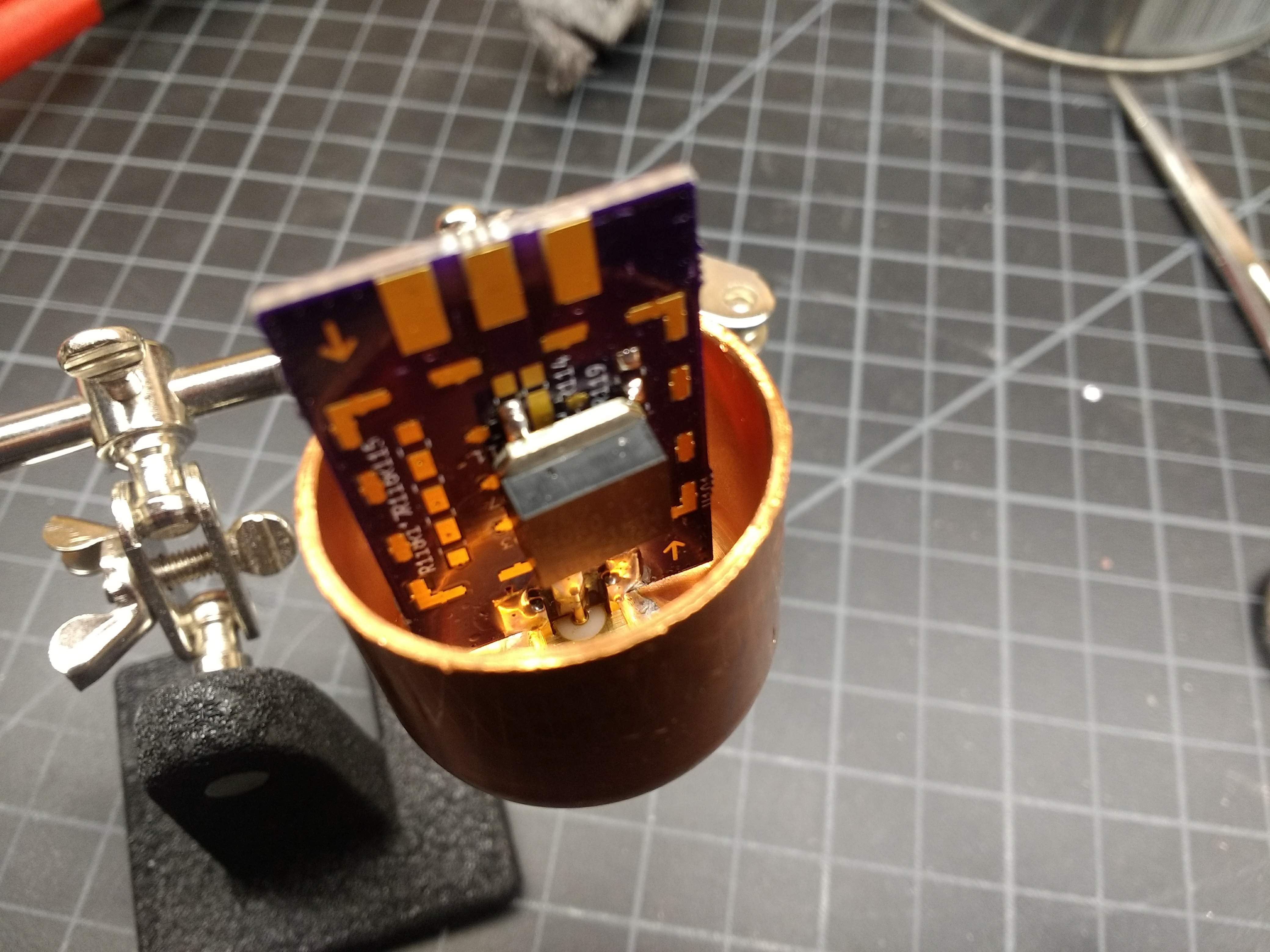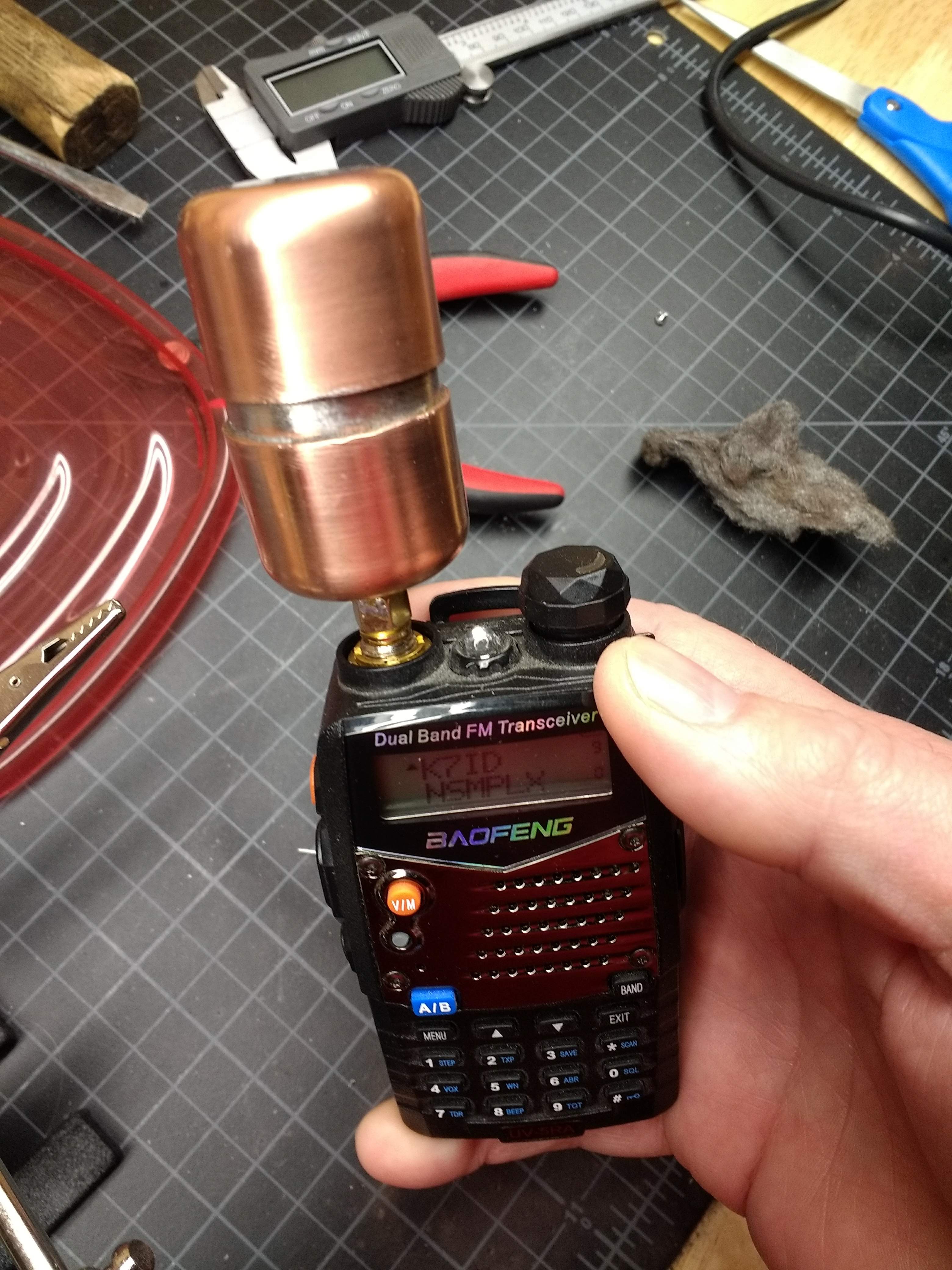-
Big Dummy, Part 2 - The (Un)Soldering
04/22/2019 at 00:14 • 0 commentsSo, how exactly does one make 40 solder connections to a pair of big copper plates?
I puzzled over that one for a while. I had cut two discs from the copper sheet, about 3" in diameter. I used Fusion 360 to make a template for the 20 holes I'd need, pasted it onto the copper, and punched some holes with a transfer punch. They didn't pierce the copper, but I thought that would be fine - each dimple could hold a lead while I used my big soldering gun to heat it up.
Nope. Nowhere near enough heat.
Plan B occurred to me while waiting in vain for the soldering gun to heat up the copper disc: if only the disc were just below the melting point of solder, I could just push it over the top with a regular iron. So I bought a cheap hot plate at Target and gave it a shot. It was promising:
![]()
You can practically see what's coming. But I couldn't - I happily soldered away, pleased with my cleverness. I got to resistor number 13 before I learned that cheap Target hotplates don't exactly have PID loops to control their temperature:
![]()
Still, the basic idea was somewhat sound. What I came up with was building the whole thing first, then soldering it with all the resistors mechanically attached to the plates. This required through holes of 0.6-mm, which meant I had to buy a pin vise and small bits. But with everything secured, the soldering went much better:
![]()
A length of 6-32 threaded brass rod holds the final assembly together and connects the center conductor of the SO-239 jack to the bottom plate. Here it is before trimming off the rod and soldering.
![]()
The end of the threaded rod needed a little turning down before it would fit in the SO-239 solder cup. Lacking a lathe - sigh - I chucked the rod in my drill and spun it against a file. A couple of brass hex nuts finished the connection to the bottom plate and Big Dummy was ready for an oily dunk.
![]()
It tool most of two pints to fill the can. I haven's had a chance to test it yet - my big HF rig isn't set up now. More to come
-
Big Dummy
04/11/2019 at 15:57 • 0 commentsTurns out that soldering 20 resistors between two big plates of copper is a non-trivial task. Who'da thunk?
The design goals of Big Dummy are a little grander. What I wanted was a dummy load with more power handling - 50 watts preferably - and a way to tap off the transmitter's output so I can make some measurements. I also want to make a "Cantenna"-style load - built into a paint bucket and filled with dielectric oil for cooling. I don't know why - it just seems cool. Plus, I want the thing to be usable not just in the HF bands but hopefully also at VHF and maybe even UHF. Lastly, I want it to look good.
After looking at all sorts of designs and searching for cheap and easily available components, I settled on 20 1-k thick-film resistors in parallel. That gives 50 ohms of impedance, and with 2-watt resistors, that should dissipate 40 watts - close enough to 50. My plan was to build it into a small (one quart, or about a liter) paint can. I wanted to suspend the resistors between two copper plates for low parasitic capacitance and good power dissipation, so I ordered up some 24-AWG copper sheet off Amazon. It's about 0.5-mm thick, which doesn't sound like much but. it's more than enough. I had no idea going in how hard this decision was going to make the project.
For the testing connection, I modified a design from K7AGE that's pretty simple. His dummy used eight 100-ohm power resistors in a series-parallel arrangement to get 50 ohms total. That allowed him to tap off the center of two of the series resistances, treating them like a voltage divider. That goes to the test point through a 1N5711 Schottky diode, with a small ceramic decoupling cap across the test points.
I suck at EDA software - so far - so I just did a quick Fritzing schematic:
![]()
All I had was 1000-ohm resistors, so I had to do a series-parallel network to provide the voltage divider needed for the test point. That was a fun bit of soldering:
![]()
I dig circuit sculptures...
While soldering these, i noticed that the appeared to be wire-wound - see the spiral grooves? I destructively tested one, just to be sure they were actually metal-film:
![]()
Yup - solid slug of material. The grooves must be how they fine-tune the resistance.
-
L'il Dummy
04/11/2019 at 15:56 • 0 commentsThe basic design for this dummy load comes from the RF Biscuit project by @georg ottinger. It's a simple PCB design that has pads for SMA edge connectors at each end, a ground plane around the whole board, and pads for placing SMT components in arbitrary combinations to build up filters, attenuators, and amps for RF use. I downloaded his design and had three boards printed up at OSH Park for a couple of bucks. I have a couple of things I want to try with these boards, and the first is a 50-ohm dummy load for my handy-talkie (HT).
![]()
The circuit for a dummy load is stupid (heh) simple - it's literally just a 50-ohm resistor across the antenna connector's inner conductor and shield. But, as with all things RF, details matter. Not just any resistor will do. First, it has be able to dissipate the power that the radio will put through it - 5 watts in this case. That means you need to spec a power resistor, which more often than not are wirewound. No bueno - that looks more like an inductor than a resistor to an RF circuit, and things will start to get twitchy. What to do?
We need a non-wirewound, 50-ohm power resistor, preferably in an SMT package. Luckily, @georg ottinger lists a thick-film, SMT resistor that can dissipate a whopping 35 watts - a Bourns PWR263S-35-50R0F. I picked one up off of Mouser for less than $5, and sourced some card-edge SMA jacks from Amazon to complete the internals.
I soldered up the board and gave the dummy load a test on my Baofeng. To my surprise, the dummy was almost as effective an antenna as the stock rubber ducky - I was able to hit a repeater a couple of miles from my house! Clearly this is not how a dummy load is intended to act. I figured a decent enclosure would help, so off to Home Depot.
My idea was to case everything up inside a small length of copper pipe. The RD Biscuit board fit nicely inside a 1" diameter copper pipe, so I bought a short length of pipe and two 1" caps. Copper is crazy expensive, which sucked a little since I only need a piece of pipe like 3/4" long to couple the two caps together. I drilled a hole in one cap for the SMA jack, polished everything up nice and clean and fluxed the crap out of it, then tried to solder it in place. I had to move up from my Weller soldering gun to a propane torch, and there was a lot of juggling around hot copper and molten solder, but in the end I got it soldered together.
![]()
Doesn't look half bad cleaned up:
![]()
I had intended to fill the case with mineral oil before soldering it up, but I couldn't figure out how to do that. If I had somehow marked the position of the board inside the pipe I could drill a small hole in the top cap and fill it now, but why bother? The resistor is rated at like 7 times what this radio and any of the HTs I'm like to own can radiate, and even if the resistor gets a little warm in use - and it does - it's no big deal. I'm leaving well enough alone.
Double checked the dummy load and it now does exactly what it's supposed to do. I also checked it on an SWR meter and it's behaving just like it should. L'il Dummy seems like a success - my first ham radio-related build worked! W00t!
 Dan Maloney
Dan Maloney